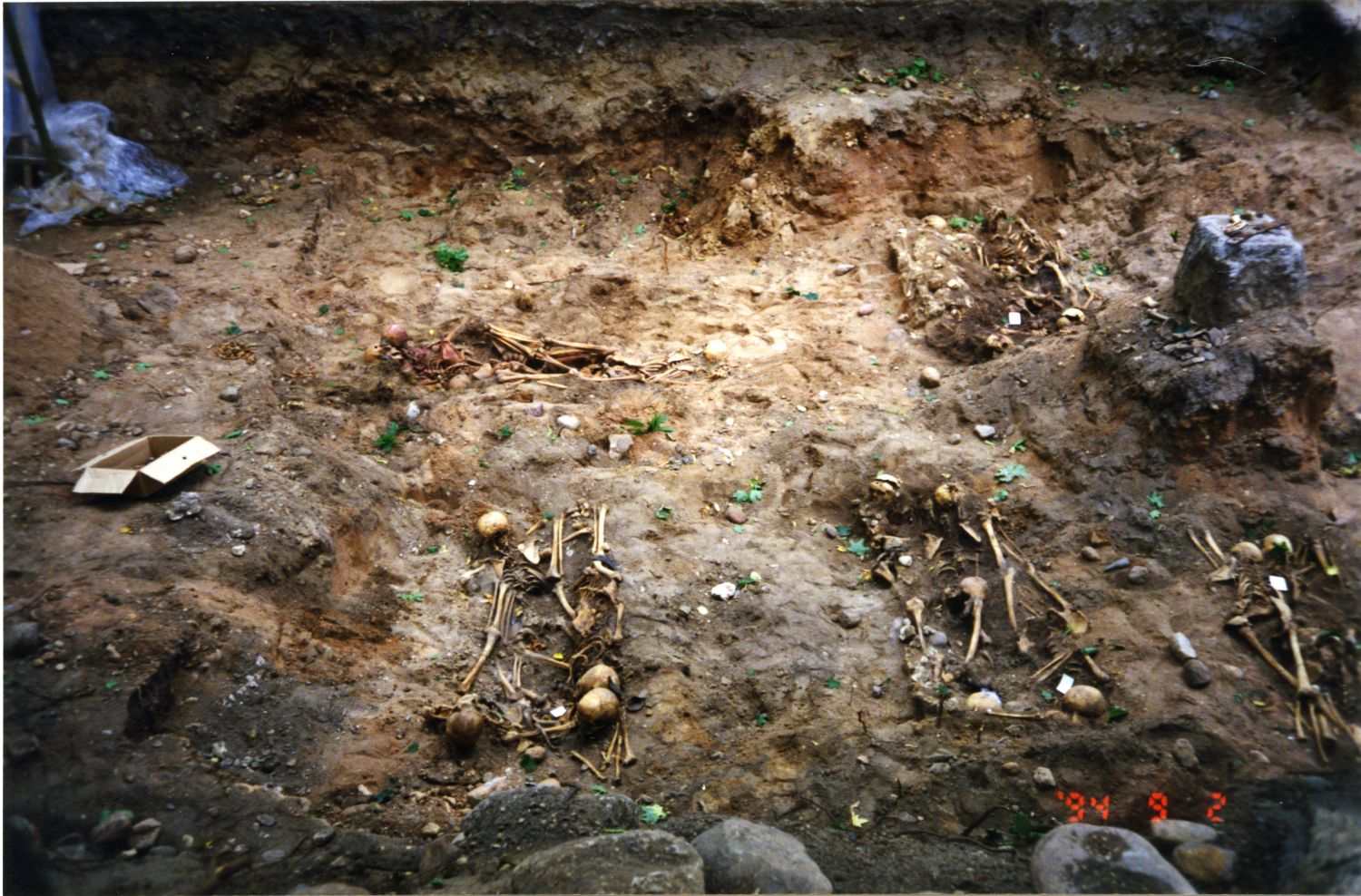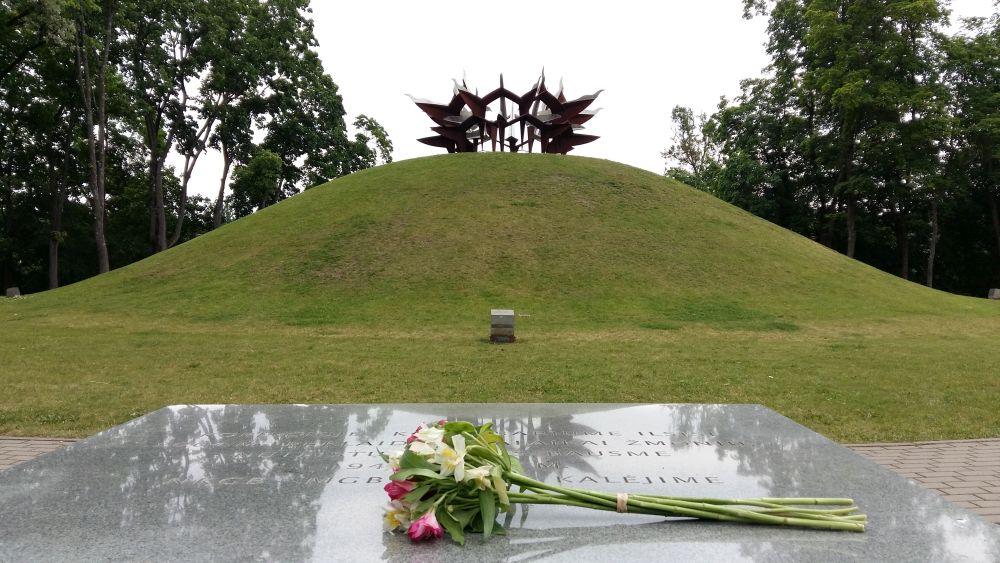Tuskulėnai victims
The alphabetical list of the people who were executed between 1944 and 1947

HISTORY
From 28th September 1944 to 16th April 1947, 774 persons were sentenced to death by USSR military tribunals. The majority of them were executed in the NKGB (MGB) prison, located in Vilnius (Aukų str. 2A) and seven of them died in prison prior to the execution of the death penalty.
Most of them (613) were imprisoned and sentenced under Article 58 of the RSFSR Penal Code, stating “Treason to the Motherland”. A special group of the NKGB (MGB) Division A officers, who carried out the executions, would secretly put the victims to the mass graves in the territory of the former manor in Tuskulėnai. The pits were dug beforehand and some of them were used for multiple times. In such cases, after the victims’ bodies had been thrown in, they were covered with lime, diesel fuel and a layer of ruberoid sheets; the victims of the proceeding executions would have been placed on top.
The territory served as a mass grave until the spring of 1947. The 26 May 1947 decree issued by the Supreme Council of the USSR commuted capital punishment to twenty-five years of imprisonment; in 1950 the death penalty was restored.
The list of the buried in mass graves in Tuskulėnai includes participants in the armed and unarmed anti-Soviet resistance, participants of the uprising, taking place in June of 1941, and the fighters of the Polish underground army under the title Armija Krajowa. Some of the murdered were charged with Nazi collaboration, participation in the Holocaust or crimes against the civilians. In 1944, 45 persons were murdered; in 1945 – 479; in 1946 – 185; and in 1947 – 58. The biggest number of the executions was carried out on the 2nd March 1945 (42 persons) and on 21st of March 1945 (45 persons). They were people of various nationalities, including Lithuanians, Russians, Poles, Germans, Belarusians, Latvians, Ukrainians and Jews. There was also an Estonian, an Uzbek, a Tartar, an Ossetian, a Chuvash, an Armenian and an Udmurt.
The restoration of true historical facts became a matter of concern to the national revival that started in Lithuania in 1988. The documents and criminal proceedings in the former KGB archive were studied, witnesses’ remembrances gathered and a search for the armed resistants’ graves started.

TUSKULĖNAI MASS GRAVE
Early in 1994 the Department of State Security established that there was a mass grave of the Soviet victims of 1944–1947 on the territory of the Culture and Sports House of the Ministry of Internal Affairs and the former manor in Tuskulėnai. Archaeological excavations and the exhumation of the remains started in the territory of Tuskulėnai manor during the same year, and from 1994 to 1995 the remains of 706 murdered people were discovered. In 2003 the remains of other 18 people were found when the construction of a chapel-columbarium began. A total number of 45 mass graves with the remains of 724 people were uncovered during the archaeological excavations on the territory of the manor. Prof. Antanas Garmus, Habil. Dr. Vytautas Urbanavičius, Prof. Rimantas Jankauskas, Prof. Dr. Ilona Vaškevičiūtė and Assoc. Prof. Dr. Arūnas Barkus supervised and carried out the investigation. The experts identified the remains of 66 people (the data of 2015), among them - the remains of Bishop Vincentas Borisevičius and the post-war armed resistance leaders Jonas Semaška-Liepa and Leonas Taunys-Kovas.
After the completion of the archaeological research of the graves and anthropological studies of the remains, a chapel-columbarium, that served as the final resting place, was designed. It is in the form of a burial mound with a chapel inside. On the 2nd November 2004 the remains of the victims of the Soviet terror, discovered in the territory of Tuskulėnai manor, were placed in their coffins in the chapel-columbarium. In 2009 vault mosaic “Trinity” by artist Gitenis Umbrasas, symbolising Fate, Happiness and Freedom, adorned the cupola of the chapel-columbarium, and the shining crown by sculptor Gediminas Karalius was placed on the top of the burial mound during the same year.

Immortalisation
In 1994 the Security Department of the Republic of Lithuania established that people, killed in the NKGB (MGB) prison between 1944 and 1947, were put to the mass graves in the territory of the manor in Tuskulėnai in Vilnius. Archaeological excavations in the territory started.
In 2000 the names of 195 armed resistance participants, who had been shot dead in the NKGB (MGB) prison, were carved on the socle of the former building of the KGB. An exposition was opened in the shooting chamber of the Museum of Occupations and Freedom Fights. On the 19th June 2002 the Memorial Complex of Tuskulėnai Peace Park was established by Decree No. 932 of the Government of the Republic of Lithuania. The complex consists of the Chapel-Columbarium, Tuskulėnai Manor House and Officina, White Manor and the Chapel of St. Theresa, the park and its surroundings. In 2002 Severinas Vaitiekus’ monography “Tuskulėnai: egzekucijų aukos ir budeliai (1944–1947)” (Tuskulėnai: The Execution Victims and Executioners (1944–1947)” was published. On 19th July 2006 the Seimas of the Republic of Lithuania included the 28th of September as Tuskulėnai Victims’ Memorial Day in the list of memorial days. In 2011 museum exposition “The Secrets of Tuskulėnai Manor” was opened in the basement of the White Manor.